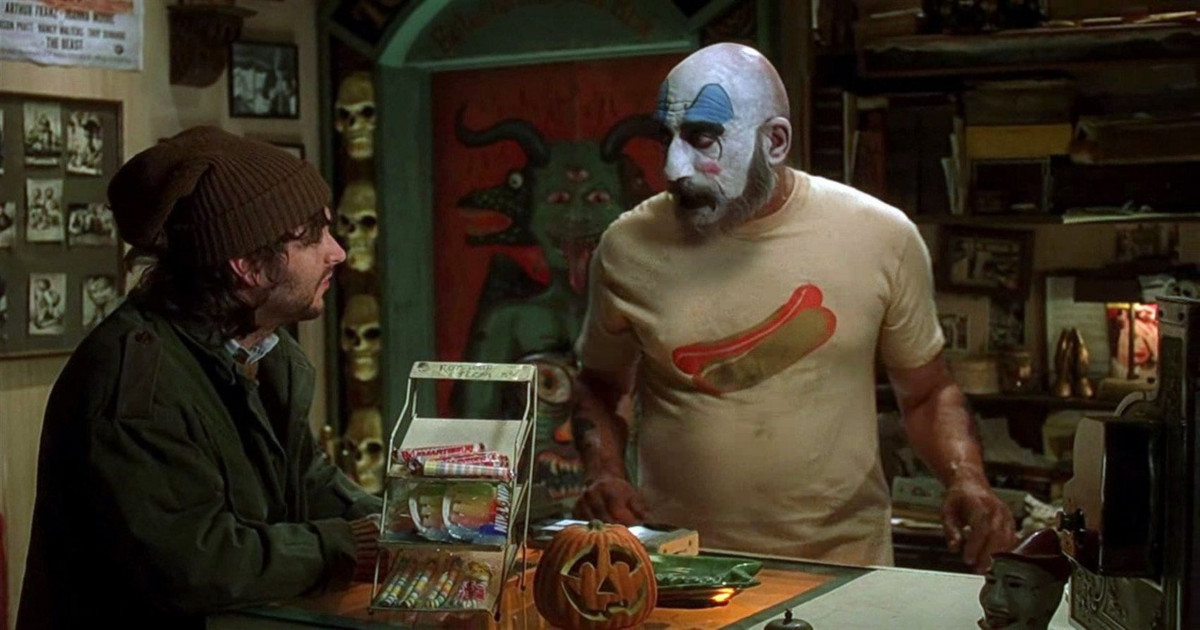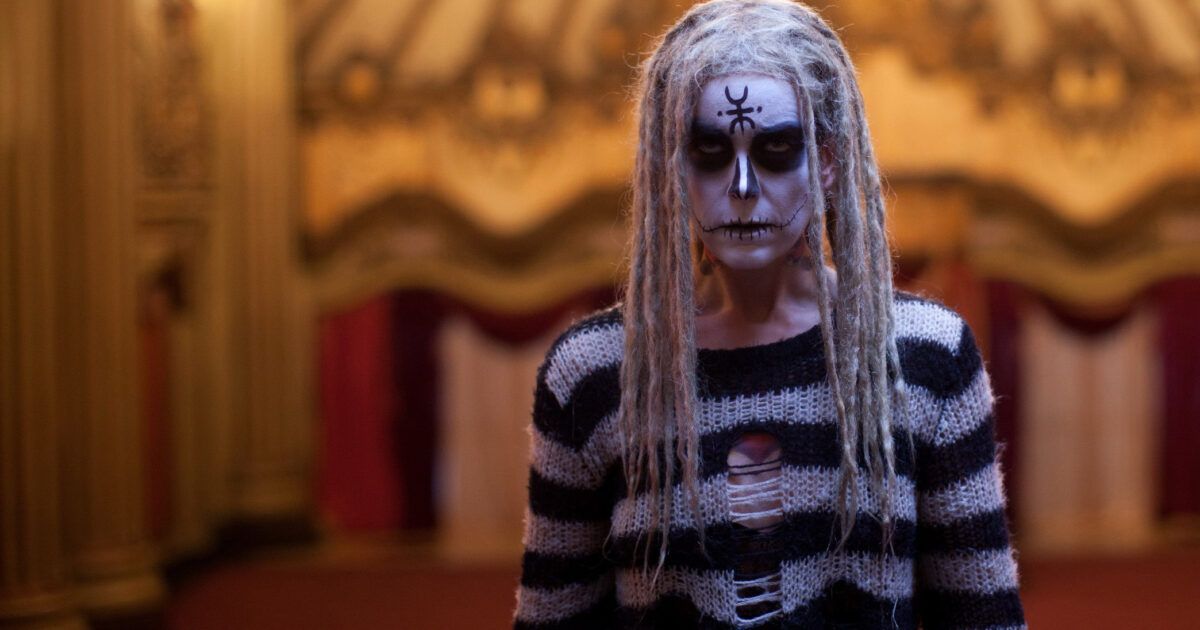Like Quentin Tarantino, Rob Zombie wears his influences on his sleeves, constantly paying tribute to classic exploitation and horror films from the 1970s and 1980s. Most of his films take place in the 1970s, many of them on Halloween night. Directors of slasher and exploitation films like Tobe Hooper, Wes Craven, Sean Cunningham, and John Carpenter are major influences.
How Zombie Uses Classic Horror Actors
One way the director pays tribute to his favorite 1970s and 1980s film is by using actors known for their genre roles in classic films of this generation. In many cases, he revived the careers of actors who gave up film for television or simply stopped working years ago. A perfect example is Malcolm McDowell, who appears in his films Halloween, Halloween 2, and 31. McDowell is probably best known for If... and two 1970s classics, A Clockwork Orange and Caligula, the latter two of which perfectly fit into the shock-factor aesthetic of Zombie.
Zombie almost always includes Bill Moseley in his films, as well, and that actor is best known as the legendary and terrifying Chop Top in The Texas Massacre II. Another Zombie regular is Sid Haig, whose first big role was actually in the 1960s cult classic Spider Baby, but he went on and appeared in many iconic 'blaxploitation' classics like Foxy Brown, Coffy, Black Mama, White Mama, and more. Haig has become well-known now for his terrifying, unforgettable performances in six of Zombie's films.
Karen Black gives an amazing performance as Mother Firefly in House of 1,000 Corpses, however, a different actor replaced her for the sequel, The Devil’s Rejects. Again, she was famous for (mostly horror) classic films from the late 1960s to the late 1980s, including Easy Rider, Airport 1975, Trilogy of Terror, Family Plot, Burnt Offerings, Cut and Run, and It’s Alive III, all classics.
Ken Foree has appeared in multiple Rob Zombie films, and is known in horror circles for his starring role in director George A. Romero's classic, Dawn of the Dead, as well as appearing in From Beyond, an adaption of a story by H.P. Lovecraft. Dee Wallace, known for Cujo, The Hills Have Eyes (directed by Wes Craven), and E.T., all major 1970s films, is also a Rob Zombie regular.
Meg Foster, known for her role in John Carpenter’s They Live, an iconic film about mind control, has also appeared in more than one Zombie film. One film that seems to have been an influence on Rob Zombie is The Hills Have Eyes, which was remade years later by Alexandre Aja (Haute Tension). One of the scary people in the film (along with the aforementioned Dee Wallace) is Michael Berryman, a giant behemoth who plays Pluto. Zombie has used Berryman in several features, and Berryman’s characters always come across as bald, creepy semi-human beasts you would not want to meet. With this great array of classic horror stars, Zombie shows that he's carrying a certain cinematic lineage.
Exploitation Lifted From 70s Classics
The Devil’s Rejects is influenced by The Last House on the Left, a 1970s exploitation revenge film. In that film, innocent young women were forced to humiliate themselves and each other. This type of gross sadism is evident in the hotel scene from The Devil’s Rejects, where Sheri Moon Zombie forces one woman to physically abuse her friend in order to use the bathroom. In fact, it is this type of exploitation and savage sadism that ran through the 1970s exploitation films which seem to be the biggest influence on Rob Zombie.
Besides using 1970s actors, Zombie is also clearly influenced by a number of 1970s films of this vein, the most prominent being Tobe Hooper’s The Texas Chainsaw Massacre, one of the most amazing, shocking, and important horror movies ever made. In that film, a character known as Leatherface skins his victims’ faces and wears them as a macabre and unholy mask.
Leatherface is based on killer Ed Gein, who robbed graves, mutilated dead bodies, and dressed up in masks of human skin. Zombie obviously knows much about the legend (and the way it seemed to influence horror cinema), because Ed Gein is featured in Captain Spaulding’s famous attraction The Murder Ride, which also features serial killer and cannibal Albert Fish and Dr. Satan, a character in the film The Devil's Rejects.
In House of 1,000 Corpses, Otis Driftwood (Bill Moseley) cuts off a man’s face and wears it as a mask. To make things even more repulsive, he forcefully kisses the man’s daughter while wearing the father’s face. It is a grotesque scene, and one straight out of Texas Chainsaw Massacre. Another similarity is that both films involve a group of young people who are taken in by a psychotic murderous family, where they are trapped, tormented, tortured, skinned, and killed. There is something about cults and their violence at the time which uniquely affected horror cinema in the 70s, and Rob Zombie picked up the mantle.
Other Horror Movie Influences on Rob Zombie
Texas Chainsaw Massacre II is one of the few films in horror where the sequel is as good or even better than the original. The ending of the film involves a chase in a gigantic, underground man-made dungeon filled with ghoulish imagery and signs of violence and cannibalism. In House of 1,000 Corpses, we get to meet the real Dr. Satan, who has a similar underground lair filled with morbid ghouls and victims and signs of violence and torture.
Another film that influenced Rob Zombie was Friday the 13th, one of the first major slasher movies ever made. In a surprise ending, a girl lies in a boat, after having survived. Then, in slow motion, the killer jumps out of the water and into her boat, attacking her, and presumably killing her. House of 1,000 Corpses has a similar surprise ending. As Captain Spaulding drives the lone survivor to safety, Otis jumps up from the car’s backseat and attacks the victim similarly.
The final film that was an obvious influence on Rob Zombie is Halloween. He directed the remake and one sequel, and Halloween is at the same time faithful to John Carpenter’s original film and is an original film with typical Zombie touches, such as “white trash” dialogue and characters. With the Halloween films, we see Zombie assimilating his passion for classic horror and bringing it into his own style, taking the past and carrying it into the future.

.png)


